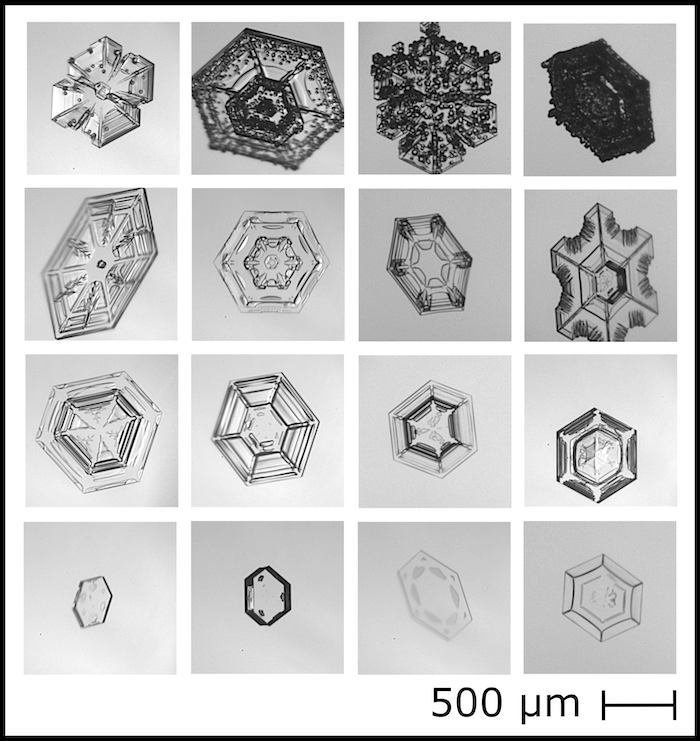Real ice crystal images publicly available
An open access database provides scientists and general public information on individual atmospheric ice crystals that were captured in their native environment using research aircrafts.
Ice crystals never cease to excite us with their delicate geometries. Many of us are familiar with falling snow flakes but the tiny ice crystals found in high-altitude clouds are more of a mystery. Their mysterious nature is related to the fact that high-altitude ice clouds are so difficult to reach. Aircrafts are needed to sample these clouds. Aircrafts as a measurement platform provide a challenge for cloud instrumentation. Such instruments need to be able to capture ice crystals – usually not larger than human hair – while moving with an airspeed of some 200 meters per second where air temperature can be as low as -70°C.
The airborne cloud observations group at IMK-AAF has mastered the art of ice crystal measurements with their own airborne cloud probe PHIPS. PHIPS was developed under the lead of Dr. Martin Schnaiter and successfully operated in airborne campaigns since 2017.
The motivation for developing the PHIPS probe was to combine stereoscopic imaging of individual ice crystals to measurement of their angular light scattering function. Information of the angular light scattering is needed to understand how much sun light ice clouds are reflecting and how much terrestrial radiation they are keeping in the atmosphere. The way ice crystals scatters light cannot be directly calculated but assumptions need to be made, and until now only few experimental data sets were available to test these assumptions.
The ice crystal data gathered with the PHIPS probe is intended to help develop optical parameterizations needed for climate and weather forecasting models but also provide information on the detailed ice crystal morphology to the atmospheric community. Therefore, it was clear from the beginning that the data would be made available in an open access data base – the database for real ice crystals.
The Real Ice Crystals -database will contain best examples of ice crystals measured from the airborne campaigns where PHIPS was operational. Datasets will cover Southern Ocean clouds, Arctic clouds, Thunderstorms anvils over Florida and clouds probed over the great plains of US. Already a set of almost thousand ice crystals can be found online with new data being continuously updated. The IMK-AAF team hopes that the database will interest people beyond the atmospheric community and will motivate many to take peek in the marvelous world of tiny ice crystals.
The Real Ice Crystal -database can be found under the following web address:
www.realicecrystals.de

